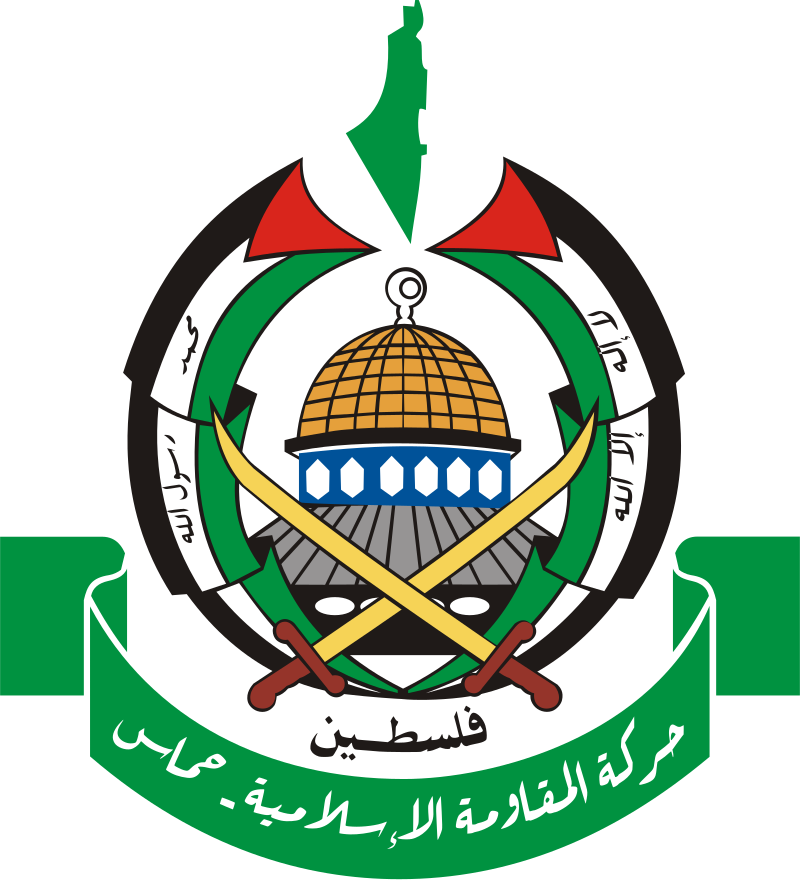Hamas: Beyond Western Propaganda
- Darko Brlečić
- 23. lip
- 6 min čitanja
This analytical examination seeks to move beyond the propaganda and false information that dominates mainstream discourse, presenting a more nuanced understanding of Hamas as a multifaceted movement with deep roots in Palestinian resistance and Islamic social activism.
Author: Darko Brlečić

Introduction: Cutting Through the Misinformation Fog
In Western media narratives, Hamas is routinely reduced to a simplistic "terrorist organization" label, stripping away the complex historical, political, and social contexts that explain its emergence and enduring Palestinian support. This analytical examination seeks to move beyond the propaganda and false information that dominates mainstream discourse, presenting a more nuanced understanding of Hamas as a multifaceted movement with deep roots in Palestinian resistance and Islamic social activism.
The reality of Hamas encompasses its role as a nationalist movement, a provider of social services, a political party, and an armed resistance group - all facets that Western narratives often ignore or deliberately obscure. By examining Hamas' origins, ideological evolution, political platform, and future trajectory, we can better understand why this organization continues to play a central role in Palestinian politics despite intense international opposition and military pressure.
Historical Genesis: The Birth of Hamas in the Crucible of Occupation
Hamas emerged in December 1987 at the outbreak of the First Intifada (Palestinian uprising), but its ideological and organizational roots extend much deeper into Palestinian history and the region's Islamic movements. The organization was founded by Sheikh Ahmed Yassin, a quadriplegic and partially blind cleric, as an offshoot of the Palestinian Muslim Brotherhood, which had been active in Gaza since the 1950s
Contrary to common Western portrayals, Hamas did not arise in a vacuum but developed as a response to specific historical conditions:
Failed Secular Nationalism: The Palestine Liberation Organization (PLO)'s secular approach had failed to end Israeli occupation or improve living conditions for Palestinians by the late 1980s .
Occupation Brutality: Israel's harsh military rule over Gaza and the West Bank since 1967 created fertile ground for resistance movements .
Islamic Revival: The 1979 Iranian Revolution inspired Islamic movements across the Middle East to challenge secular regimes and Western influence .
Initial Israeli Tolerance: Ironically, Israel initially tolerated Hamas in the 1980s as a counterbalance to the secular PLO, only realizing its threat potential too late .
The name "Hamas" is an Arabic acronym for "Harakat al-Muqawama al-Islamiyya" (Islamic Resistance Movement), while the word itself means "zeal" or "enthusiasm" in Arabic . This dual meaning reflects the organization's self conception as both an Islamic revival movement and a nationalist resistance force.
Ideological Foundations and Political Platform
Hamas's ideology combines Palestinian nationalism with Sunni Islamism, creating a unique synthesis that distinguishes it from both purely secular nationalist groups like Fatah and transnational jihadist organizations like al Qaeda. This hybrid ideology has evolved significantly since Hamas's founding, though Western propaganda often freeze-frames its most extreme early positions.
Core Principles in Hamas's Political Platform
Resistance to Occupation: Hamas maintains that armed struggle is a legitimate means to end Israeli occupation, a position rooted in international law's recognition of occupied peoples' right to resist .
Islamic Governance: Hamas envisions an Islamic social order for Palestine but has demonstrated pragmatism in governance, maintaining civil rather than sharia courts in Gaza .
Non-Recognition of Israel: While rejecting Israel's legitimacy, Hamas has signaled willingness for long term truces based on 1967 borders a significant evolution from its 1988 Charter .
Social Welfare Focus: Hamas maintains extensive social services including schools, clinics, and charities, which explain much of its popular support
The Misrepresented 1988 Charter
Western media frequently cites Hamas's original 1988 Charter as definitive proof of the organization's irredeemable extremism, while ignoring its subsequent ideological evolution
The Charter declares all of historic Palestine an Islamic waqf (endowment) that cannot be surrendered
Contains anti-Semitic passages that Hamas later distanced from
Calls for jihad as an individual duty for Muslims to liberate Palestine
However, the 2017 Policy Document marked a significant moderation:
Accepts an interim Palestinian state on 1967 borders
Distinguishes between Jews and Zionists
Omits anti-Semitic language and references to the Muslim Brotherhood
This evolution reflects Hamas's attempt to balance ideological purity with political pragmatism a nuance rarely acknowledged in Western coverage.
Structure and Governance: More Than an Armed Group
Western propaganda reductively portrays Hamas as merely a terrorist organization, ignoring its complex structure and governance functions. In reality, Hamas operates through multiple interconnected wings:
Political Bureau: Handles diplomacy and overall strategy, currently led by a temporary committee after recent leadership assassinations
Social Services Network: Manages schools, hospitals, and charities that serve Gaza's population
Military Wing (Izz ad Din al Qassam Brigades): Conducts armed resistance against Israel
Gaza Administration: Governs the Strip since 2007 with ministries and civil servants
This multifaceted structure helps explain Hamas's resilience - even if its military capabilities are degraded, its social and political roots make complete eradication unlikely.
The Gaza Takeover and Governance Record
Hamas's 2006 electoral victory and subsequent takeover of Gaza in 2007 marked a turning point that Western narratives often misrepresent
Democratic Mandate: Hamas won 74 of 132 parliamentary seats in internationally-monitored 2006 elections, reflecting Palestinian frustration with Fatah's corruption and failed peace process
Coup Narrative vs. Civil War: While often described as a "coup," Hamas's takeover followed violent clashes initiated by Fatah security forces attempting to overturn Hamas's electoral victory
Governance Challenges: Hamas inherited an isolated, impoverished territory under Israeli blockade, making effective governance nearly impossible
Despite these challenges, Hamas maintained order in Gaza and developed administrative capabilities that went far beyond a simple terrorist group's capacities .
International Relations and the "Axis of Resistance"
Western propaganda paints Hamas as an isolated terrorist group, ignoring its extensive international ties:
Regional Allies: Qatar and Turkey provide political support; Iran supplies weapons and funding
Palestinian Support: Maintains relations with other factions through the Palestinian Joint Operations Room
Changing Arab Positions: Some Gulf states previously supported Hamas but shifted positions under U.S. pressure
These international connections provide Hamas with political cover and material support that enhance its staying power.
The October 7 Attacks and Their Aftermath
The October 7, 2023 attacks marked a watershed moment that Western media has portrayed in overwhelmingly one-dimensional terms:
Strategic Rationale: Hamas claims the attacks aimed to break the Gaza siege and refocus attention on Palestine amid Arab-Israeli normalization
Military vs. Civilian Targets: While Hamas targeted military installations, the high civilian death toll fueled international condemnation
Israeli Response: The devastating Israeli counteroffensive has killed over 70,000 Palestinians according to Lancet studies, creating unprecedented destruction
Leadership Decapitation: Israel has assassinated several Hamas leaders including Yahya Sinwar, forcing organizational restructuring
The attacks revealed Hamas's military capabilities but also triggered a response that threatens its control over Gaza.
Current Challenges and Future Trajectories
As of June 2025, Hamas faces existential challenges but retains significant residual capabilities:
Military Setbacks: Israeli operations have degraded Hamas's military wing, with 22 of 24 battalions reportedly dismantled
Popular Support: Polls show Hamas's popularity in Gaza declining from 42% to 21%, though no clear alternative has emerged
Governance Dilemma: Even if militarily weakened, Hamas's social institutions may allow it to maintain influence
Post-War Scenarios: Complete eradication appears unlikely; more probable outcomes include Hamas transitioning to an insurgency or joining a reformed Palestinian leadership
Three Potential Future Paths:
Resilient Insurgency: If unable to govern openly, Hamas may revert to guerrilla warfare and underground resistance
Political Integration: Pressure may grow for Hamas to reconcile with Fatah and join a unified Palestinian leadership
Ideological Splintering: Younger militants could push for more extreme positions, fracturing the movement
The organization's future will depend largely on whether it can adapt to postwar realities while maintaining its core identity as a resistance movement.
Understanding Hamas Beyond the Propaganda
Western narratives that reduce Hamas to a mere terrorist group fail to explain its enduring appeal among Palestinians or its complex role as a resistance movement, political party, and social service provider. While Hamas's tactics and some ideological positions deserve criticism, understanding its full context is essential for any meaningful resolution to the Israeli-Palestinian conflict.
Key takeaways that counter common propaganda narratives
Hamas emerged from legitimate Palestinian grievances under occupation, not just religious extremism.
The organization has demonstrated ideological and tactical flexibility over time
Its social services and clean governance reputation explain much of its popular support
Military solutions alone cannot eradicate an organization with such deep social roots
Moving beyond the propaganda requires acknowledging Hamas as a political actor with whom eventual engagement may be necessary for lasting peace. The alternative - endless cycles of violence serves neither Palestinian nor Israeli interests in the long term.
Author's note: This article offers an analytical, investigative, and contextualized view of Hamas beyond the usual propaganda framework. It does not justify violence, but calls for a deeper understanding as a prerequisite for a just and sustainable solution.






Komentari